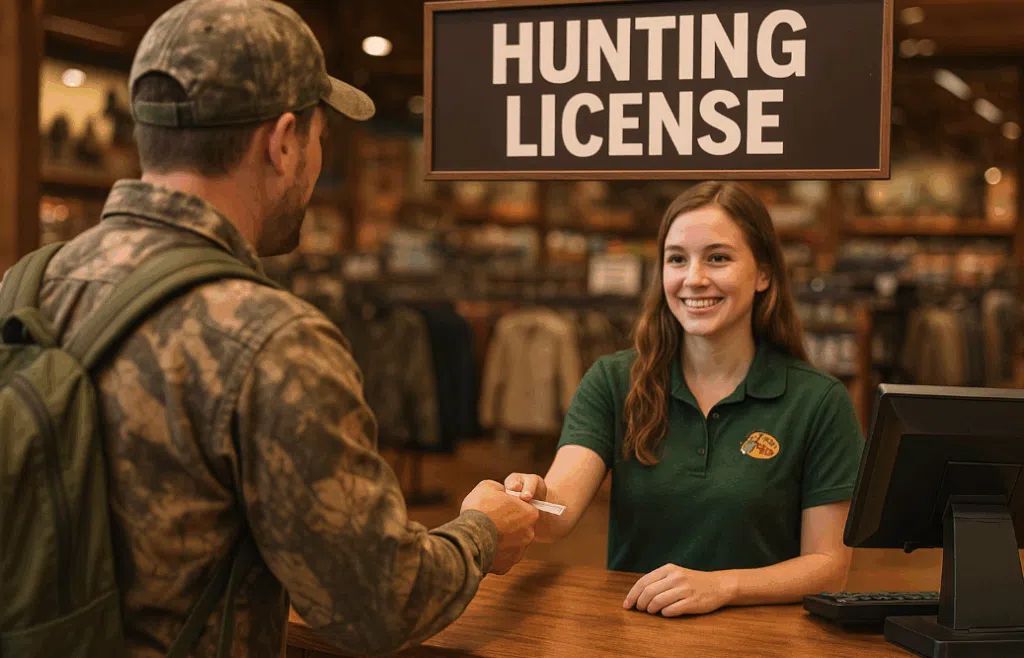What License Do You Need to Hunt Deer in Minnesota?

Hunting deer in Minnesota is a popular outdoor activity that requires proper licensing to ensure compliance with state regulations. Whether you are a resident or a nonresident, understanding the specific licenses and permits needed is essential before heading out into the field. This guide will clarify the requirements for obtaining a Minnesota Deer license, including necessary permits, hunter education, and other important considerations to help you prepare for a successful and legal hunting experience.
Do You Need a License to Hunt Deer in Minnesota?
To hunt Deer in Minnesota, you’ll need a valid hunting license issued by the Minnesota Department of Natural Resources (DNR). Both residents and nonresidents are required to have a hunting license to legally pursue deer within the state.
In addition to the general hunting license, deer hunters must obtain a deer permit specific to the type of deer and hunting season they plan to participate in. These permits are often categorized by weapon type, geographic zone, and deer species (antlered or antlerless).
Hunter education is mandatory for all first-time hunters purchasing a license in Minnesota. This ensures that hunters understand safety protocols, ethical hunting practices, and state regulations before they begin hunting.
- Purchase a valid Minnesota hunting license (resident or nonresident).
- Obtain the appropriate deer permit for the season and weapon type.
- Complete hunter education if you are a first-time license buyer.
Following these steps will ensure you are properly licensed and prepared to hunt deer legally in Minnesota.
Additional Permits or Stamps for Hunting Deer
Beyond the basic hunting license and deer permit, Minnesota requires hunters to be aware of any additional permits or stamps that may apply. For deer hunting, there are no migratory bird stamps required, but specific deer permits must be purchased depending on the hunting zone and season.
Some deer hunting opportunities in Minnesota are managed through a lottery or draw system, especially for special permit areas or limited-entry zones. Hunters interested in these areas must apply and be selected through the official draw process.
Season Dates for Deer in Minnesota
The Deer hunting season in Minnesota typically runs from early September through late December, with specific dates varying by weapon type and hunting zone. Archery seasons generally open earlier, often in September, while firearm seasons start later in the fall.
Different zones within Minnesota may have varying season dates and restrictions, so it is important to consult the official Minnesota DNR website for the most current and detailed season information.
For official season dates and updates, visit the Minnesota Department of Natural Resources website.
Bag Limits and Legal Hunting Methods
Hunters in Minnesota must adhere to daily bag limits and harvest restrictions established by the state. Typically, the bag limit for deer is one deer per hunter per season, but this can vary depending on the permit type and hunting zone.
Legal hunting methods include archery equipment, firearms, and muzzleloaders, each with specific season dates and regulations. Certain weapon restrictions may apply in designated zones or during special seasons.
Hunters should also be aware of legal considerations such as tagging requirements, reporting harvested deer, and respecting private property boundaries.
For comprehensive and up-to-date information on bag limits and legal hunting methods, consult the Minnesota DNR official regulations.
Where Can You Hunt Deer in Minnesota?
Deer hunting in Minnesota is permitted on a variety of public lands, including Wildlife Management Areas (WMAs), state forests, and certain state parks. These public lands provide ample opportunities for hunters to pursue deer in diverse habitats.
Hunters may also hunt on private land with the landowner’s permission, which is essential to avoid trespassing violations.
The Minnesota DNR offers detailed public land hunting maps and tools to help hunters locate suitable hunting areas throughout the state.
Access these resources on the Minnesota Department of Natural Resources website to plan your hunting trip effectively.
Meet Hunter Education Requirements
Minnesota requires all first-time hunters to complete a hunter education course before purchasing a hunting license. This course covers firearm safety, hunting ethics, wildlife conservation, and state-specific regulations.
Hunter education can be completed through in-person classes or online programs approved by the Minnesota DNR.
There are exceptions for hunters under a certain age or those hunting under direct supervision of a licensed adult, but these are limited and should be verified with the state agency.
For more information and to access hunter education resources, visit https://recademics.com/hunting/Minnesota.
How to Buy a Minnesota Hunting License
You can purchase your Minnesota hunting license for Deer through the Minnesota Department of Natural Resources. Licenses are available online, by phone, or in person at authorized vendors such as sporting goods stores and DNR offices.
To buy online, visit the official Minnesota DNR licensing portal, where you can select the appropriate license and permits, pay fees, and print your license immediately.
In-person purchases allow you to receive assistance and ask questions about the licensing process.
For detailed step-by-step instructions and additional tips, refer to the comprehensive guide at https://recademics.com/blog/hunting/how-to-get-a-hunting-license-in-Minnesota/.
Frequently Asked Questions
Do I need a separate permit for antlerless deer in Minnesota?
Yes, hunters must obtain a specific permit for antlerless deer, which is separate from the permit for antlered deer. These permits are often limited and may require participation in a lottery system depending on the zone.
Can nonresidents hunt deer in Minnesota?
Nonresidents are allowed to hunt deer in Minnesota but must purchase a nonresident hunting license and the appropriate deer permits. Nonresident fees are higher than resident fees.
Is hunter education required for all ages?
Hunter education is required for all first-time hunters regardless of age. However, hunters under a certain age may be allowed to hunt under direct supervision without completing the course. Check the Minnesota DNR for specific age exemptions.
Where can I find public land maps for deer hunting in Minnesota?
The Minnesota DNR provides online maps and tools to locate Wildlife Management Areas and other public lands open to deer hunting. These resources are accessible on the official DNR website.
What should I do after harvesting a deer in Minnesota?
Hunters must tag their deer immediately after harvest and report the harvest to the Minnesota DNR as required. Specific reporting methods and deadlines are outlined on the DNR website.
Hunting
- Alabama
- Alaska
- Arizona
- Arkansas
- California
- Colorado
- Connecticut
- Delaware
- Florida
- Georgia
- Hawaii
- Idaho
- Illinois
- Indiana
- Iowa
- Kansas
- Kentucky
- Louisiana
- Maine
- Maryland
- Massachusetts
- Michigan
- Minnesota
- Mississippi
- Missouri
- Montana
- Nebraska
- Nevada
- New Hampshire
- New Jersey
- New Mexico
- New York
- North Carolina
- North Dakota
- Ohio
- Oklahoma
- Oregon
- Pennsylvania
- Rhode Island
- South Carolina
- South Dakota
- Tennessee
- Texas
- Utah
- Vermont
- Virginia
- Washington
- West Virginia
- Wisconsin
- Wyoming
